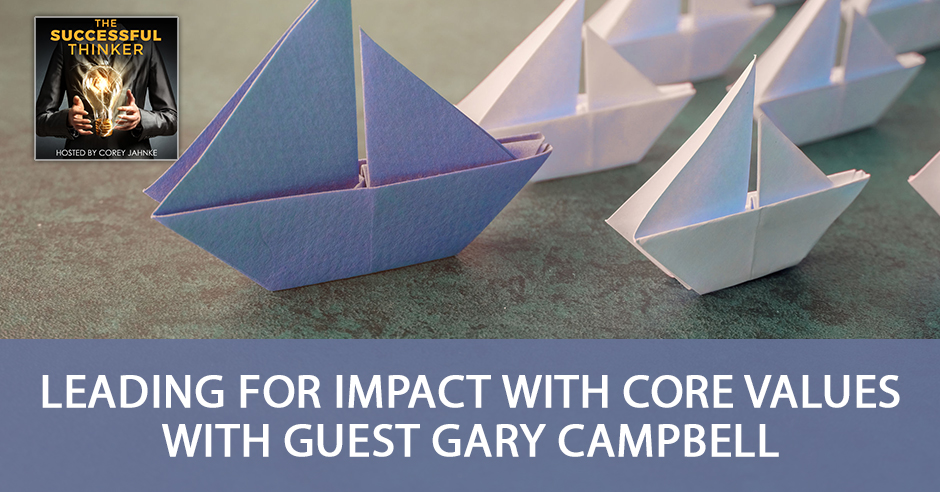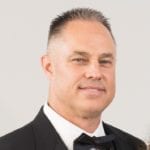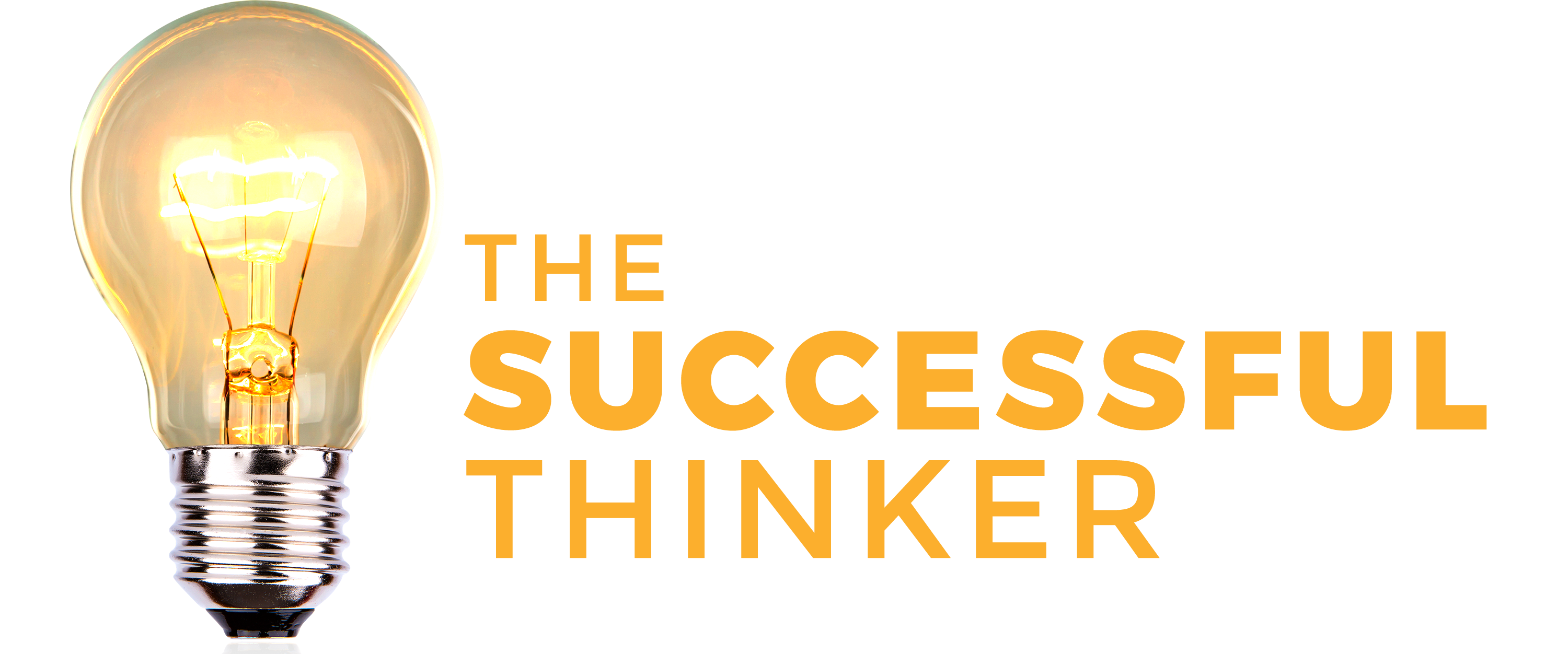
Good leadership inspires teamwork which is one keystone to a company’s success. Gary Campbell, Chief Executive Officer of Johnson Health Center and President of Impact2Lead, has taken teamwork to incredible levels by applying what he had learned in a previous role with Bayer and through personal development training as a Go-Giver Certified Coach. Gary shares how an intense and uncompromising commitment to co-creating and living an organization’s core values has driven his team from a small company of only 60 people to a major player in the healthcare industry. Gary’s team won the coveted Employer of Choice award and continues to attract top-notch talent who want to live and work in a culture of excellence and integrity.
—
Listen to the podcast here:
Leading For Impact With Core Values with Guest Gary Campbell
How To Create A Culture Of Excellence And Integrity
We are in great shape because we are talking to one of my personal friends and favorite people. A man who has shown the Go-Giver way. That’s how I met him. I met him at a Go-Giver event hosted by my friend Bob Burg. This gentleman takes the Go-Giver Principles and applies them to every area of his life. You can see it in his family, you can see it in his friends and you can see it in the accomplishments he’s made in his profession and in his personal business. This man is the Chief Executive Officer of Johnson Health Center in Virginia. He’s also the President of Impact2Lead. He goes around teaching people how to speak the Go-Giver message and how to become impactful leaders. Successful Thinkers, give a warm welcome to my friend Gary Campbell. Gary, how’s it going?
Corey, it’s awesome. Thank you for that wonderful introduction. It is good to chat with you again.
I always look forward to our talks because one of the things that I find in life is there are few people who actually walk their talk and I admire that about you. Can you tell us a little bit of your story and how you became the CEO of Johnson Health Center and the journey that Johnson Health Center has taken under your leadership?![]()
Johnson Health Center is a federally qualified health center, which means we get some funding to take care of the uninsured and underserved people out there. I had no idea what we were. It’s a healthcare company. It’s primary care. We have OB-GYN, we have dental behavioral health. We have enabling services that help patients get those wraparound services that they need. We take care of probably about 25,000 patients in a year, unique patients, which means that everyone’s coming for at least one visit. In 2018 we had 80,000 encounters, which was our busiest year ever. How I got into this, I didn’t work in nonprofit until 2011. I spent most of my career prior to this in the for-profit world, working in Fortune companies primarily at Bayer Corporation, where I spent a significant amount of time in Pittsburgh, Pennsylvania.
I learned a lot there about strategy and incorporating strategy into a business model. When you work at a company like that where you have shareholders that you have to make certain that you’re responsive to. You learn the ins and outs of how to run an effective business, financially prudent business. At the same time, doing it in a way that unleashes potential with people. That’s where I had my success at Bayer. It was coming into that organization the second time around. They gave me the keys to their procurement operations kingdom. I’m the last guy in the world who should get keys to a procurement operations division because I had no real experience outside of running these enterprise-wide contingent labor programs. These were pretty big deals because there were a lot of spins that came onto these programs.
What we did, that program got rolled into a bigger program with our operations group. I had the opportunity to integrate the four groups together. My first real experience of pulling people together that had no idea what they did outside of their own little world was there. We had so much success there that we created synergies within our ops group at Bayer’s procurement world that some of our policies were implemented at the corporate headquarters in Germany. That was unheard of at the time. Fast forward to 2011, I decided to get back to my home place in Lynchburg, Virginia. There was an opportunity with a group called Johnson Health Center in their human resources division. They had no human resource director at the time and they were a very small company, 60 employees. It was a way to get back home.

Core Values: The number one thing to being a great leader is building and nurturing relationships at all levels.
My kids were all in college here. I took a risk and said, “Let’s do it.” I didn’t anticipate spending a lot of time here because I did like working at the corporate setting for all those big companies and moving around doing crazy things, crazy hours and that kind of thing. I got into this healthcare setting and liked it. I started to realize that I was having a much greater impact on not only our customers but our employees as well. Building relationships and started bringing that philosophy and how we’re applying a lot of the same principles that we both learned from the Go-Giver way. That was how I live my life. I never had organized that way. Bringing a lot of those principles into practice at Johnson Health Center in my HR role and then later in my chief operations role and watched us grow here and then in 2014, I had the opportunity to take it over. When I had the opportunity to take it over, I applied all of these principles. I’ve built an impact leadership model along the way.
I launched my own business in 2013 and doing consulting and speaking on leadership based on some of the work I’d done at Bayer and then what I was starting to do here at Johnson Health Center. When I got to take the reins at the health center, I set out to become the Employer of Choice. When we did that, everything flushed to the surface and became reality for us. I’m just living values and incorporating values and everything we did and making it about the other person. Starting to live life that way drove us to where we are now. We’ve had our most successful four year run in our history and we are poised to do some incredible things here in 2019 and beyond. That’s probably more than you want to know, but that is where I am now and what got me going with Johnson Health Center.
You describe that the most important thing for young leaders to understand is that leadership is a journey. It sounds to me like you picked up pieces along the way. What would you say is the most important leadership concept that you develop that help you to receive the Employer of Choice award?
I think the number one thing to being a great leader is building and nurturing relationships at all levels. A lot of people are good at managing that, but you have to be good at engaging up, down, across, sideways and be genuine and authentic about it. You have to care deeply for people. In the old days, it wasn’t so much about how much you care for people, but how hard you’ve worked, how long you worked, how many hours you’ve put in. Who stayed at the desk for long as he was trying to prove their value through stepping on, stepping above and stepping over people? That is not the way people expected to be led now.
If I had any advice for people who are coming along, it is about understanding your values, understanding where you would like to be and nurturing those things to get you at some point where you hope to go. You’re right, it is a journey. It is patience and you have to be prepared to pause along the way, to get beaten up along the way. Resilience plays into this as well because it’s great to get knocked down. When I’m on my speaking journeys and my training journeys, I ask everyone in the room what’s their greatest fear as a leader and almost 90% say failure. We all know that that is a big fear but at the same time, if we don’t fail, we don’t learn. It’s difficult to put yourself in another person’s shoes unless you’ve been there. That’s been my biggest lesson and what I certainly would recommend to others. You got to understand it as a journey and it doesn’t happen overnight.
Back to the mistakes that I’ve made as a young leader myself. As much as you’d like to have some of those back, those are the most valuable lessons and things that you can use going forward. One of the things that you and I have talked about in the past is core values. I know that you built Johnson Health Center around a series of core values. Before we talk about what those values are, would you please share with us how you went ahead and developed those core values? Are they Campbell’s core values or are they Johnson Health Center core values and why?
Leadership is a journey. It doesn't happen overnight, but if you are patient and work at it, you can create a culture of excellence that offers team members a great experience. Share on XThat is the greatest question you can ask, “Are they yours or are they Johnson Health Center’s?” When we went down this path in 2011 and this was something that I got to do early on in my role as the Director of Human Resources. When I got here, we didn’t have any values per se we subscribe to. We were mission-driven. Another piece of advice as a leader, you have to be values-centered and you have to understand what your moral compass looks like so you don’t deviate and come off the track at every blow with the wind. When I stepped into the Johnson role, I’ve brought together eight people from across the company. We weren’t getting very small, but I’ll try to get eight representatives from different parts of the organization. I put them in a room and I said, “What does it mean to work at Johnson Health Center? What does it feel like to work at Johnson Health Center? What do we want people who we hire after us to be able to exhibit and to live so that it is a culture that we embrace that is driven to improving our access to healthcare for all the people we serve?”
We spent probably the better part of three weeks in and out of a closed room. It was so funny because we came up with sticky notes all over the wall of what meant what to who, those kinds of things but we narrowed it down to 37 values. We took those 37 values and then we did another vetting process and narrowing them down to five. What we came out of that session with was respect, integrity, teamwork, innovation and excellence. As I was looking at those values and how we defined them, it did align with my core values. It had to because if they didn’t, I could not work at a place where my values and the values of the organization weren’t aligned.
If you go to talks with other organizations for profit or not for profit, a lot of them have core values. The organizations that I asked, “How engaged are you with the core values?” It is probably less than 6% or 7%. They got them hanging on the walls. They talk about them. They print it in different places. Some of them are even making it part of their job descriptions, but are they living them? Are they making every single decision based on them? That’s what I encourage people. Make your decisions based on your own values. Make sure that the organization you’re working with is basing decisions on their values. That’s what we brought into the health center. When we look at everything we do, we embedded those core values into every single aspect of our life. That meant every single presentation that went up in front of whoever it was, had the core values as the number two slot right behind our mission and vision. That’s how we branded ourselves that way.
We put the values on the wall. We put them in the job descriptions. We put them in the performance appraisal process. We made hiring and firing decisions based on the core values. When we talk about living those values, it is truly something we do at Johnson Health Center and that makes everything else fall into place so nicely. When there’s a situation that arises and you have to make decisions based on is it a technical performance issue? The persons are C-players. They straddle the fence of performance. They do just enough to get by. They have no one to pull back.
When it’s a core value that they’re not living, then that certainly is the threshold of where you can make a decision to move one way or the other. We had a team of dental folks that come together along with some other people that help drive what’s called Give Kids a Smile Day and we saw 32 kids who do not have dental insurance in less than seven hours. You’re familiar with healthcare, you can imagine how difficult that can be. Somebody from outside of that group asked me to recognize them for core value award later in the year. That tells me that everyone has got their eyes squarely focused on the core values piece. That’s why it’s so important. I truly believe that’s what’s driven our success. One of the things that we measure success is by how satisfied our customers are with us. We have an overall satisfaction rate at this point of 98%. We did 34,000 surveys and out of those 34,000, 98% rank our customer service as some of the highest in the land.
The thing that brings to my mind is we’re living in an age where transparency and authenticity are incredibly important. One of the things that you and I both see in the corporate world is if you’re not careful, what you’re doing is you’re giving lip service to a lot of important concept such as diversity and your first core value, respect. Can you tell me a little bit about what your value respect means to you and how you guys try to push it out to your employees and your customers?

Core Values: Expectations change all the time because the demographics change all the time.
To summarize it, we wanted a clear statement on expectations of behavior with each other, with our patients, with vendors, with visitors, with any other human being. We wanted to make certain that our folks that call Johnson Health Center their home, treated people the way that people want to be treated and also the way we expect to be treated in return. It was a mutual thing where we’re always going to promote healthy conflict. We’re going to promote things that move us ahead. That’s why innovation is one of our core values as well. You, working in healthcare, know how important that is. What we want to do with respect is we want to create an environment to where it was the first and foremost that we admired the person in front of us and we respected the person’s values, their backgrounds, their heritage, wherever they came from, whatever walk of life, whatever political affiliation, whatever religious affiliation, it just didn’t matter.
The key for us is we respect them as human beings and partners with us along this journey. There’s no real tolerance for disrespect for the environment or disrespect with treatment here. It goes both ways. If one of our patient disrespects one of our staff members, we back our staff and at the same time we back our customers and patients if it’s the other way. In any staff to staff relations, a culture is a thin line between what’s a positive culture and what can be a culture of toxicity. We want to make certain we don’t tread that line too closely. We want to keep that above the threshold where it is a positive workplace culture and it’s consistent and that one value respect drives all of that and how we treat each other.
It’s so important the way you said first with the way we treat each other. One of the things that I know that you and I have talked about is management should never expect employees to treat customers better than management treats employees. I think it’s important that management has a real focus on integrity. Can you share that core value and how it plays into not just Johnson Health Center, but Gary Campbell’s life and the people that you surround yourself with?
That’s why I’m thankful I have people like you in my life. I think that’s big. You have to surround yourself with people who are certainly like-minded in that respect to help. It is a bit of isolation when you’re doing your own thing or you’re running your own company. You need all the help you can get. In 2014, I stood up in front of, at the time, we had 99 employees and I’ve told all of the employees, “This is an opportunity for us to own our destiny. In order for us to own our destiny, we are going to make it all about the employees. The employees are going to be number one.” I’ll never forget in the back of the room that day, one of our employees chimed out, “What about our patients?” I responded back and I said, “What about our patients?” I said, “What do you think happens to our patients when we take care of our employees?”
Somebody from the other side of the room responded without me having to say another word that says, “If our employees feel cared for, they will in turn care for the patients.” I said, “That’s how it works.” From that day forward, it was one of those goals that when you put something out there like that, and you mentioned lips service and you talked about integrity, you have to be prepared to live that. You have to be prepared to not deviate from that. Once you say it, people hang onto it and trust underlies everything we do. That’s our foundation. A lot of this ties back into all of the core values.
If you’re going to be a person of integrity and you commit to something, especially of that magnitude, you have to make certain you see it through. When I built a leadership team at Johnson Health Center, the leadership team on here and the one I have now look very different. There are few people that are still here that were here then. We promoted, we moved people off with the team and some people we moved out. The key there is I wanted everyone aligned on what it meant to do the right thing every single time. What it meant to be consistent. What it meant not to send mixed messages. What it meant to be aligned so that we’re all pursuing and sharing the same vision and helping pull people along with the same vision. At the very base of it was making certain that everything we did, the steps that we took, the walk that we took models the way for others to see that we were doing it the right way. That’s one of my personal philosophy as well.
If we don't fail, we don't learn. Share on XOne of the things that we’re seeing in the news these days is that there is no statute of limitations on disintegrity. We are seeing a lot of things coming back to haunt people that were done 30, 35 years ago and they’re trying to say, “That was then. This is now.” I think what you said was you want to be prepared to live with integrity going forward. Not expecting anything else, which ties into my favorite core value, which is excellence. There is another word that gets a lot of lip service in terms of people want to say that what they do and who they are is excellent, but their actions tend to a lot of times show good enough. What do you think about good enough and why good enough seldom is?
One of the things we created here as a result of multitudes of surveys. How do we do more feedback? How can we be more interactive with each other throughout the day and do pure work and that kind of thing? On our intranet page, there is a place for an inspirational quote. Every day, anybody can put it out there. I typically come in the mornings and I’ll give everybody a couple hours to get one out there. Most times people put their own quotes out there and they’re all good. That day is just one of those days where it was no quote out there. I threw one out there and the quote was “Mediocrity is what you get when average is what you give.” At the end of that, I said, “And that is boring.” When I talk about excellence and we talk about that being a core value. I want it to be an exciting place when people come to work at Johnson Health Center. I always say this, “I don’t harbor any illusion of keeping people here for the rest of their lives.” The goal here is we want people to have the greatest experience they’ve ever had at a workplace. The term and I only learn this term when you and I were together those years back in Orlando, walking ambassadors. I said, “I’ll want nothing but walking ambassadors here at this health center.” We’re about 200 employees now. We’ve had incredible growth. I got here with 60 employees and now we’re 200 in eight years.
In four years, we’ve doubled. We went from 100 to 200. It’s been crazy. The key here is to create a great experience for people. Create a great experience for your employees, a great experience for the people that they serve and how do you do that? You create a culture of excellence. I fully expect people to come in and bring their best selves every day. You’re not going to get 100% of your best self every day. By and large, the majority of the time you should bring your best self. The reason I say excellence is because perfection is a pursuit none of us should ever try to get to because it will always fail. Excellence means that we’ve given everything that we’ve got and we’re not always going to be successful, but we’re going to always be successful how we tried. I don’t ever want to penalize people for giving it their best, even if they come up a little short of the goal.
That’s how we define excellence here. We expect that of everybody out of every engagement. We expect that out of our vendors. I drove up a new vendor optimization strategy for this year. Bringing in some of our procurement background from the Bayer into our health center. I’m bringing in all of our critical vendors, including our bankers that we do business with. I explain to them, “No longer are we going to sign checks just for the services that you’re providing without any real reciprocation. What value are we to each other?” That has gotten their attention and we have now all of a sudden seen so much more, we were getting mediocrity before and we were giving it. That’s what we expected. We expected it in return and now that we’ve gotten to where we are, I have the opportunity to look at some of the other things that we’re engaged with. It was one of those things that excellence doesn’t just stop with our customers, our patients, our staff. It goes beyond that. It’s a never-ending journey. I always tell people that once we became the Employer of Choice, it’s an uphill climb after that because once you get near the top, trying to stay near the top or on the top is much harder than getting there to start with.
One of the things I find is very difficult in organizations is we made a bunch of changes to get here and we’re almost there. We’re at the top and suddenly everybody wants to do things the way we’ve always done them. Innovation can be a tricky core value to implement. Can you share with me your strategies for how you keep your people successfully thinking through the inevitability of change and why change is so important to stay on top?
Your two keywords are successful thinking. The climate that I stepped into was much like the climate in the majority of places that you and I both worked. The majority of the people that I speak in front of or I consult with is that they go through these great brainstorming sessions. They talk about all the great things that can happen and then they don’t do it or they’ll start it and then it drifts back into the way things have always been. We have been intentional here not to have that happen. How we do it here is we don’t make all the decisions at the executive level. We don’t make all the decisions at the senior management level. We don’t make all the changes at the senior leadership level. We don’t use the word management here.

Core Values: We have to inspire as leaders to so we can get influenced throughout the organization to help us with leading that change that is so critical to our evolution.
We don’t make the decision at the leadership team level. We made the decision pulling in people who do the work each and every day and then once we have come up with something that we feel great about or that’s going to align with the expectations of our patients. Those expectations change all the time because the demographics change all the time. The majority of the population are the Millennials right now. They’re changing the way we do business or the way they want to have business done with them. We have to innovate at all times. My key here is two things. I educate. I try to keep everyone educated on why we do things. I like to communicate. You have to communicate with them so they understand. You have to tie it back to why you’re doing it for the business.
I’ve tried to teach the folks here, what would it mean to run a successful business and why we have to be successful. If you didn’t run a successful business, then you couldn’t pay people and then you couldn’t take care of the people we take care of now. The other piece of it is how do I engage all the smart people that are working for us so they can help us with these changes because those, back to the walking ambassadors’ piece again, are the ones out there helping you carry the message and we stay on top of it? We don’t just abandon the team or the initiative once we have made a decision to make a change. We stay with them. If we have to tweak things along the way, we do. They have our support. We have their back.
The beauty of bringing people into the discussion that work alongside the people who are going to be impacted by the change is that the selling of the change is much easier. It’s about building that influence. The top on the impact leadership model is I inspire to influence. We have to inspire as leaders to others so we can get influenced throughout the organization to help us with leading that change that is so critical to our evolution as a healthcare provider and as a community partner, as a steward of the federal monies we get and those kinds of things. That’s how we continue to keep innovation at the forefront of all we do.
You just did something amazing. You used the word we something like 600 times. I think that’s so important because I’ve worked for big companies and the guy sends a letter out and he says, “As your leader, etc.” I couldn’t even get past as your leader because you said something else I thought was great. You said helping you carry the mission, which shares with me and which shows me that teamwork is a major part of the core values. Can you share with me that peer to peer strategy? How do you get people leaning sideways and down? I said before, people love to lead upwards. How do you go about trying to get people to lead sideways and down?
We tie everything back to our strategic plan and our mission of improving access to healthcare for all. The key there is we try to keep those things front and center. You were right, I did use the word we all the time. It’s rare. I can probably count on my hand when I’ve had to use the word I around here and things are usually if I have to make an executive decision, it’s something that I’m so passionate about and feel that, for example, the Employer of Choice pursuit. In February of 2016, I’m sitting across from my executive team and they’re nervous. They don’t want to go down this Employer of Choice path. They don’t think we’re ready because it is so heavily oriented towards leadership. I don’t think that they felt as if we were going to come through that okay. That’s where I used I.
I said, “I am going to push the Employer of Choice initiative because if we are not ready, we will have good work to do.” You’re exactly right with that. What has also helped us be very successful is when I took over here, we were silo heavy. There was a lot of, we talked about mediocrity and average and those kinds of things, we saw a lot of that because people were afraid to step out of their lane. I don’t ever compare my style to other people’s styles other than to say my style is different. I think that when I looked across at our unfulfilled potential, we had unfulfilled potential both as an organization and as a group of people.
It's difficult to put yourself in another person's shoes unless you've been there. Share on XAs an organization, we weren’t meeting the needs of the community. We weren’t meeting the needs of our partners in the community to do our part in providing care. We weren’t meeting our needs to teach. In healthcare, our goal as leaders should be to ready the next generation. We weren’t doing a great job with that. What I wanted to do when I took over was I wanted to incorporate more people into the process. How do we build that? You build it with teams. One of the things that became apparent to me was these folks, very similar to my deal with Bayer. When I pulled these four different procurement teams together at Bayer, they previously had spent more time talking about each other than they had talking to each other.
When we boiled it down that first day, I’m flashing back to 2008, they were so amazed at how their work tripped over into other people’s lanes. There were tears because people had no idea of the individuals under their titles. When they got to know each other, they formed some amazing sub-teams out of those four groups. I think about that to this day and I think about the amazing friendships that will form inside our walls at Bayer. I will never forget it in my entire life. It taught me a lot too because I got to learn. When I came to Johnson, I said we’re doing the same thing. When I had the opportunity to break those silos down, I said, “We’ve got to create some teams around the critical projects.”
It does two things. It helps us get things done, but at the same time, it helps us get a sense of who’s going to be the next generation of leaders because you need leaders within those teams. It’s a twofold effort here. How do you build leaders and how do you get things done through teamwork? It also taught other people that their roles with each individual department were critical. Decisions made in one group could have impacts on those efforts of another group. When you talk about teamwork, we built those things and then patient care is now oriented towards team-based care. Not only is it your physician, your nurse practitioner, your physician assistant but it’s also now those folks at the pharmacy.
It’s the nurse, it’s the front desk person, it’s the person who makes the phone call. It’s the person helping you get insurance. It’s your behavioral health counselor. It could be somebody in billing. These are all people who are wrapped around the initiative of taking care of the patients. That’s a team thing. Individual contribution is necessary at certain levels. We all have to have the ability to contribute individually, depending on whatever we’re working on. The way we look at it here at Johnson Health Center, if you can be the greatest physician, greatest administrator, greatest IT guru, greatest whatever in the land but if you have no ability to work with other people, we don’t need you. We cannot afford to have any ripples in our culture that will pull away from one of our values. That’s why teamwork is so critical to what we do at Johnson.
The five core values seem to me to add up to one very powerful word and that word is impact. I was hoping as a final takeaway, you can share with us your insights on what it means to be an impactful leader and how you’re trying to further that message through Impact2lead the organization that you run.
To sum this up in some of my talks now, I thought about this as it’s related to me. I look at three things, like the three-legged drone. I look at impact, destiny, and legacy. When I look at impact and I love the way you frame that. The core values rolling up into impact because I don’t think there’s anything that could be said that could be any truer. When I’ve talked to my staff, when I’ve talked to the people that I was in, I spent a week in Long Beach, California. Before that, I was in Santa Fe, New Mexico, great places. I met some great people. I was talking about the impact. I said, “You’re all sitting in a room now because you’re making some degree of impact, whether you know it or not.” I said, “As caregivers, as if you’re an aspiring leader or whatever you may be doing, your ability to make an impact is so core to your existence to serve other people. How you do that goes a long way in determining what destiny is in front of you. Do you own your own destiny or somebody own your destiny for you?”

Core Values: Your ability to make an impact goes a long way in determining what destiny is in front of you.
Then I fast forward to legacy. I said, “Think of fast forward to twenty years from now, 30 years from now, five years from now, whatever that looks like. You’re sitting across the table either from your older self or from the people closest to you in this world and they ask you, ‘How would you describe the way you had a positive influence on others? How would you describe your life to those closest to you?’” The final piece is that’s your legacy. How do you tie your impact, your ability to own your destiny for choices you made in your journey to the legacy you want to leave and you want the closest people in the world to remember you? How do you sum all those things up? Those were all questions we asked. In my role as a leader, my goal is to bring an impact every day through those values that I live. Those values have to be 24/7. You can’t deviate from them ever. You mentioned about things that happened 30, 35, 40 years ago and we’re seeing a lot of that.
I will say that I have certainly matured over time and there are probably things I did 30 or 40 years ago and thank goodness I don’t remember things. Thank goodness I wasn’t in social media and all that crazy stuff going on. I always knew in my heart of heart that I wanted to serve other people and I always wanted to make an impact on other people. That never changed, coming up through time. As you recognize, as you get certain closer to the end than you are at the beginning, you realized that you were put on this Earth to be a community. We’re put on this Earth to help other people. We’re put on this Earth to whatever our gifts are. We need to make sure that we are giving back as well. I think that it all ties into the impact. That’s where the impact leadership model was born is coming out of the Go-Giver training that we both went through back in 2013, 2014. I just think about how that helped mold me. That’s how I sum up the whole impact thing in a nutshell.
One of the things that you alluded to is that you are going to have a legacy, people are going to remember you, but how they remember you and what that legacy is up to you. When you act intentionally and impactfully, the legacy tends to be more what you hope it will be instead of what it will ultimately be by default.
I want to share a story with you about an individual I met in California. I didn’t meet him at the conference. There was a huge show there that was happening in Long Beach. A big, huge reggae festival. There were so many people there and this person was coordinating event activities. I remember sitting next to this person and I told him what I did. He asked me why I was there and I told him b what I did and why he was there. He was a bit of a mess, an interesting guy and he’s probably in his early 40s. I’ve learned from him in that conversation that he wishes he was doing something different. He wishes he was doing something more impactful. He’s concerned about his legacy and at this point, he doesn’t have one he could be fueled good and positive about.
I agreed to meet with him the next day, which we did and we met and we talked again about it. He hadn’t changed his feelings from the evening before. I don’t think he’s quite ready to take the steps that are necessary to invest in what it’s going to take to make that change. I think about that person in his early 40s. The clock is always ticking but it’s never too late to start to think about the positive impact and your legacy. We all get to the end of the line at some point in time. I always advice people, “Leave your legacy so you can enjoy it while you’re living. You want people to talk right about you while you’re gone, but you want people to be able to say positive things about you while you’re here. It’s nice to know that you did have a positive influence on society.”
Gary, how can my Successful Thinkers out there get in touch with you to learn more about how they can become an impactful leader?
Make your decisions based on your own values. Share on XThe easiest and quickest way is through my website at www.Impact2Lead.com. I just wrote my latest blog out there, which is great, called Passion, Pain and Patience. That’s the easiest way. We have a Facebook page as well. I’m on Twitter and I’m on Instagram. I’m all over the place, but I think the bigger piece is that you and I are connected. Many of your Successful Thinkers out there know you, they know me as well, or they can know me and vice versa. People that know the Impact obviously knows the Successful Thinker and that’s you, Corey.
Thank you so much for sharing your time with us. I know how busy you are. This has been a great hour for me. I loved hearing you refer to exactly how your core values added to Impact. I want to thank you. Successful Thinkers out there, I encourage you to go to Impact2Lead to learn more about Gary Campbell and what he’s doing out there. I want you to know that I want you to have a wonderful day and that I believe in you.
Thank you, Corey.
Thank you, Gary.
Important Links:
- Johnson Health Center
- Impact2Lead
- Passion, Pain and Patience – blog
- Impact2Lead on Facebook
- Impact2Lead on Twitter
- https://www.Impact2Lead.com
- http://JHCVirginia.org
- https://www.LinkedIn.com/in/gary-campbell-3138936/
- https://www.Facebook.com/profile.php?id=100006469614931
About Gary Campbell

Gary Campbell is the founder and owner of Impact2Lead, LLC and also the Chief Executive Officer of Johnson Health Center in Lynchburg, Virginia. He launched Impact2Lead in late 2013 after reading “The Go-Giver” by Bob Burg and John David Mann. The book’s theme, centered on bringing value to others by applying the five laws of stratospheric success, inspired him to build his own model on helping individuals and organizations unleash potential through impactful leadership.
When he took over Johnson Health Center in 2014, he was driven on creating an environment that would bring joy and fulfillment to employees. He wanted the Johnson Health Center to become an employer of choice by incorporating the concepts of the Impact Leadership model into the everyday practices of the center. As a result, Johnson Health Center became the first ever Federally Qualified Health Center (FQHC) to achieve the Employer of Choice recognition in 2016. In 2017, the center was named a “Great Place to Work” and in 2018, a top 10 “Emerging Small Business” in Central Virginia.
Not only was the health center successful in transforming the culture and developing great leaders, the affect the transformation had on the community and patient base was impactful.
Johnson Health Center has nearly doubled its’ patient and employee base while becoming a sought after business partner in the community. It has also become a model of excellence that is nationally recognized and operationally sound with the most recent Operational Site Visit resulting in a perfect score.
Gary attributes his passion for transformation and the business experience gained in leadership roles with LexisNexis and Bayer Corporation as key components to his overall success.
Today, Gary speaks and consults on this model across the country. “I want to help others’ experience what we have accomplished and to know what it feels like to become an employer of choice”.
Love the show? Subscribe, rate, review, and share!
Join the Successful Thinker Community today:



